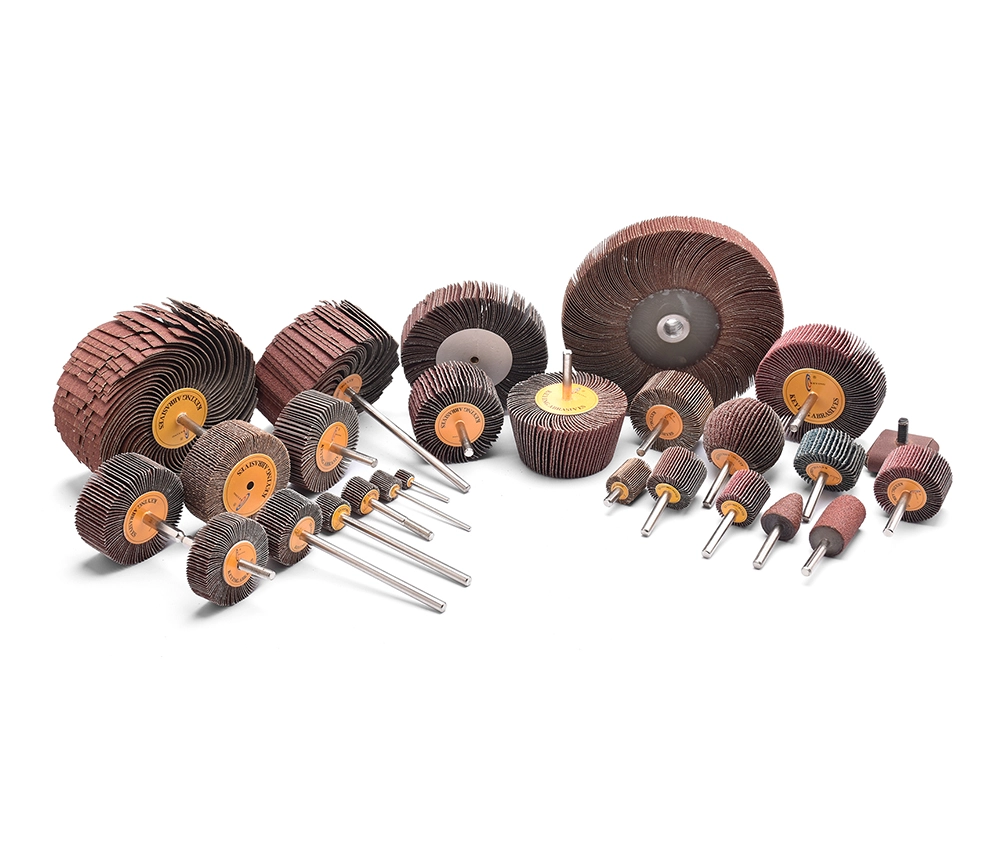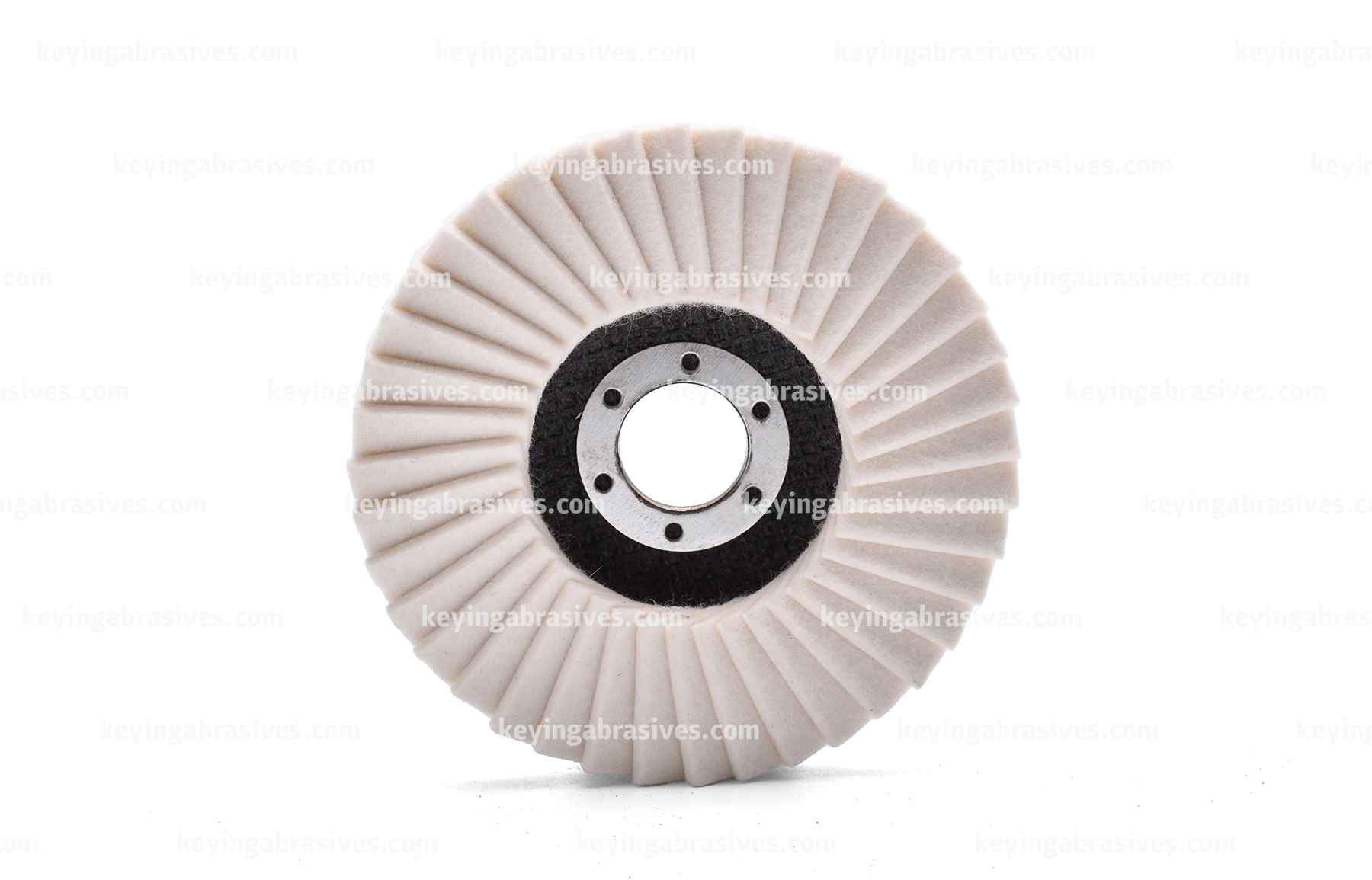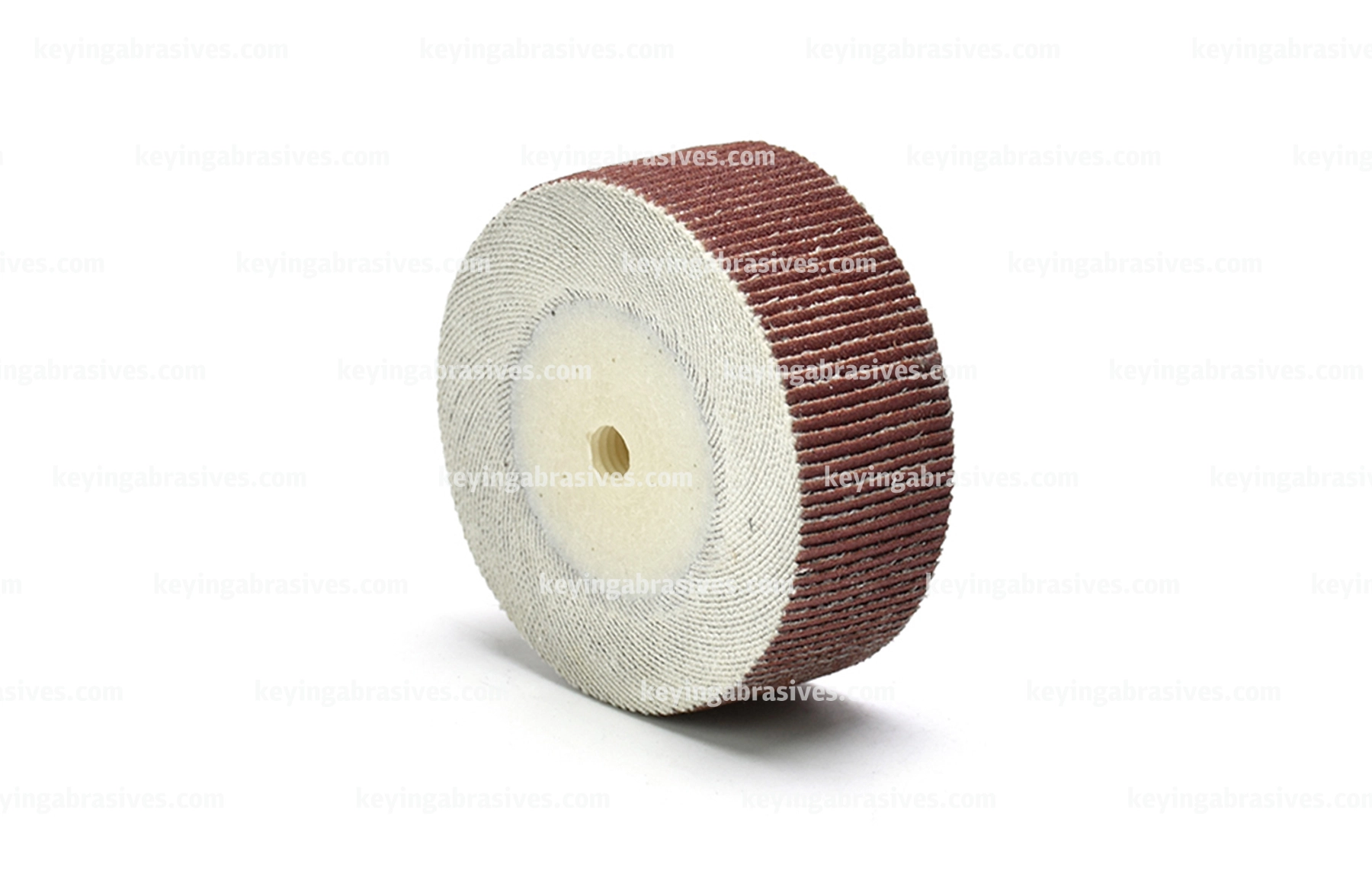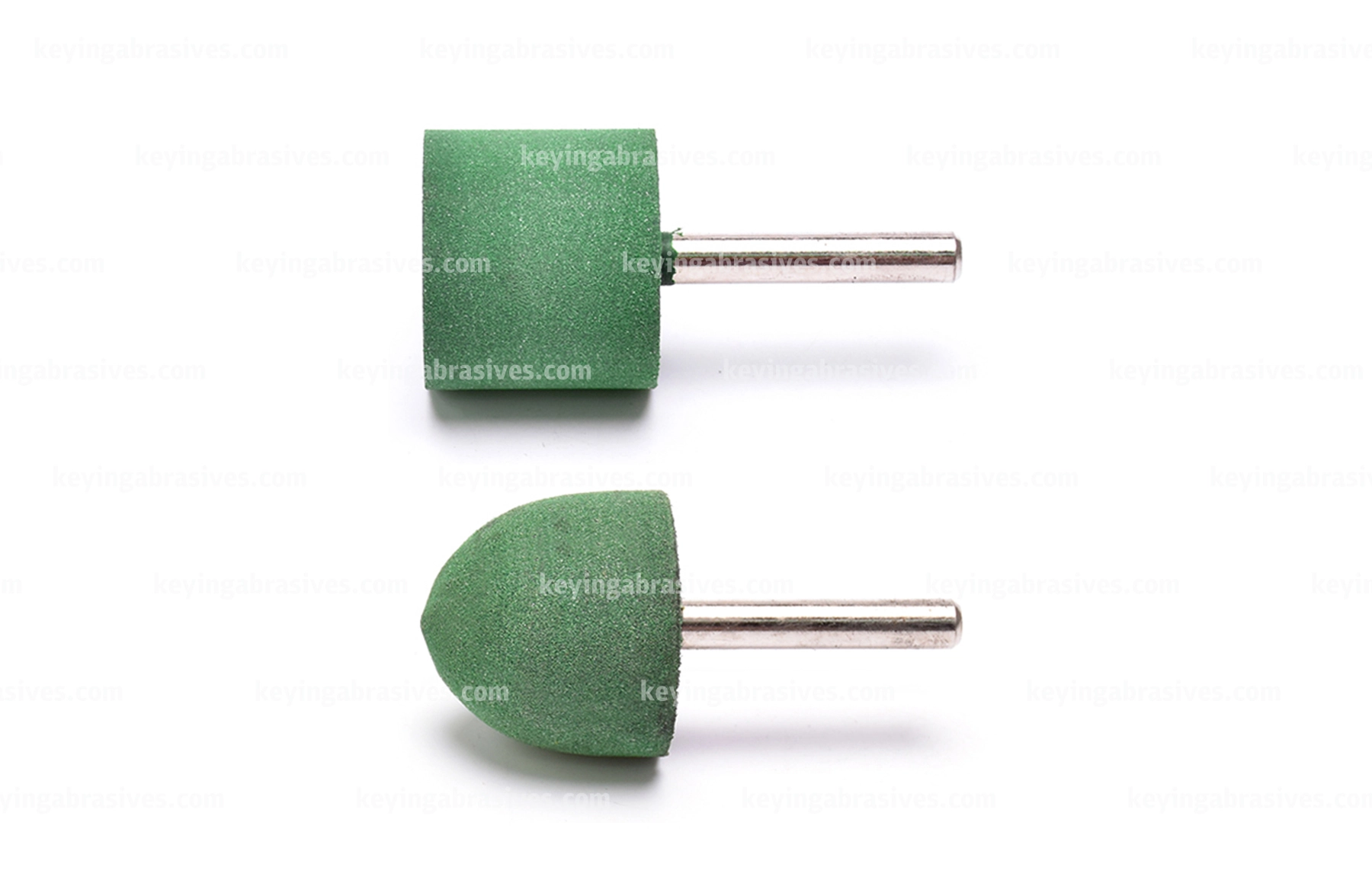
Dec 20-2017
Flap wheels are essential tools in metal fabrication, offering flexibility and efficiency for a range of finishing and deburring tasks. They are composed of multiple overlapping abrasive flaps adhered to a central hub, which allows for continuous exposure of new abrasive material as they wear down. Here’s a detailed guide on how to use flap wheels in metal fabrication:
Type of Flap Wheel:
Mounted Flap Wheels: Ideal for small, intricate work, and used with handheld tools like die grinders and drills.
Unmounted Flap Wheels: Suitable for larger, more demanding tasks, used with bench grinders or angle grinders.
Abrasive Material:
Aluminum Oxide: Versatile and suitable for most metals, providing a good balance of durability and cutting power.
Zirconia Alumina: Lasts longer and is more aggressive, ideal for heavy grinding on hard metals.
Ceramic: Best for high-demand applications and tough materials, offers the highest durability and efficiency.
Grit Size:
Coarse (40-60 grit): For heavy material removal, rough shaping, and aggressive grinding.
Medium (80-120 grit): For blending, smoothing, and intermediate finishing tasks.
Fine (150-240 grit and above): For fine finishing, polishing, and preparing surfaces for painting or coating.
Wheel Size and Shape:
Choose a size and shape that fits your tool and is appropriate for the workpiece size and the type of work being performed.
Safety Gear:
Wear safety goggles or a face shield to protect your eyes from debris.
Use hearing protection, as metal grinding can be very loud.
Wear gloves to protect your hands from sharp edges and heat.
Use appropriate clothing to protect your skin from sparks and metal shavings.
Tool Setup:
Ensure the tool you’re using (e.g., die grinder, drill, angle grinder) is compatible with the flap wheel's size and spindle type.
Secure the workpiece firmly in place using clamps or a vise to prevent movement during grinding.
Flap Wheel Installation:
For mounted flap wheels, insert the spindle into the tool's chuck or collet and tighten securely.
For unmounted flap wheels, attach the wheel to a mandrel or directly to the tool’s arbor and secure it with appropriate fasteners.
Starting the Tool:
Turn on the tool and allow it to reach full speed before bringing the flap wheel into contact with the metal surface.
Ensure you maintain a firm grip on the tool to control it effectively.
Grinding Technique:
Angle of Approach: Hold the tool at a slight angle (about 15-30 degrees) to the surface for optimal grinding and to prevent gouging.
Movement: Use smooth, consistent strokes and move the tool back and forth across the workpiece.
Pressure: Apply moderate, even pressure. Let the abrasive do the work; excessive pressure can wear out the wheel faster and damage the workpiece.
Types of Work:
Deburring: Use coarser grit wheels to remove burrs and rough edges from cut or machined metal parts.
Blending: Medium grit wheels are ideal for blending weld seams and smoothing rough surfaces.
Finishing: Fine grit wheels are used for final finishing, polishing, and preparing surfaces for painting or coating.
Adjusting for Different Tasks:
Change the wheel or adjust the grit as needed for different stages of the project (from rough grinding to fine finishing).
Post-Use Care and Maintenance
Tool Maintenance:
After use, clean the tool and remove any metal dust or debris from the flap wheel and tool housing.
Inspect the flap wheel for wear. Replace it when the flaps are worn down or the performance diminishes.
Safety Checks:
Check the tool's power cord, switch, and moving parts for any signs of damage or wear.
Ensure the tool is stored safely and that the flap wheel is removed if it’s not in immediate use.
Storage:
Store flap wheels in a dry, cool place to prevent moisture damage and maintain their performance.
Tips for Best Results
Test on Scrap Material: Always test the flap wheel on a piece of scrap metal to ensure it produces the desired finish and doesn’t damage the workpiece.
Tool Control: Keep a steady hand and avoid applying excessive force, which can lead to uneven grinding or damage.
Regular Inspection: Frequently check the flap wheel during use to ensure it remains in good condition and replace it when necessary.
Using flap wheels effectively in metal fabrication requires choosing the right wheel, preparing properly, employing the correct technique, and maintaining your tools and wheels. By following these steps, you can achieve high-quality finishes and improve the efficiency of your metalworking projects.


